
Mozhaisk. Luzhetsky-St. Ferapont-Nativity of the Virgin Monastery, northwest view. From left: Nativity Cathedral, bell tower, Church of Transfiguration over Holy Gates. July 5, 2015.
William BrumfieldAt the beginning of the 20th century, Russian chemist and photographer Sergei Prokudin-Gorsky developed a complex process for vivid, detailed color photography. His vision of photography as a form of education and enlightenment was demonstrated with special clarity in his photographs of architectural monuments taken at historic sites throughout the Russian heartland.
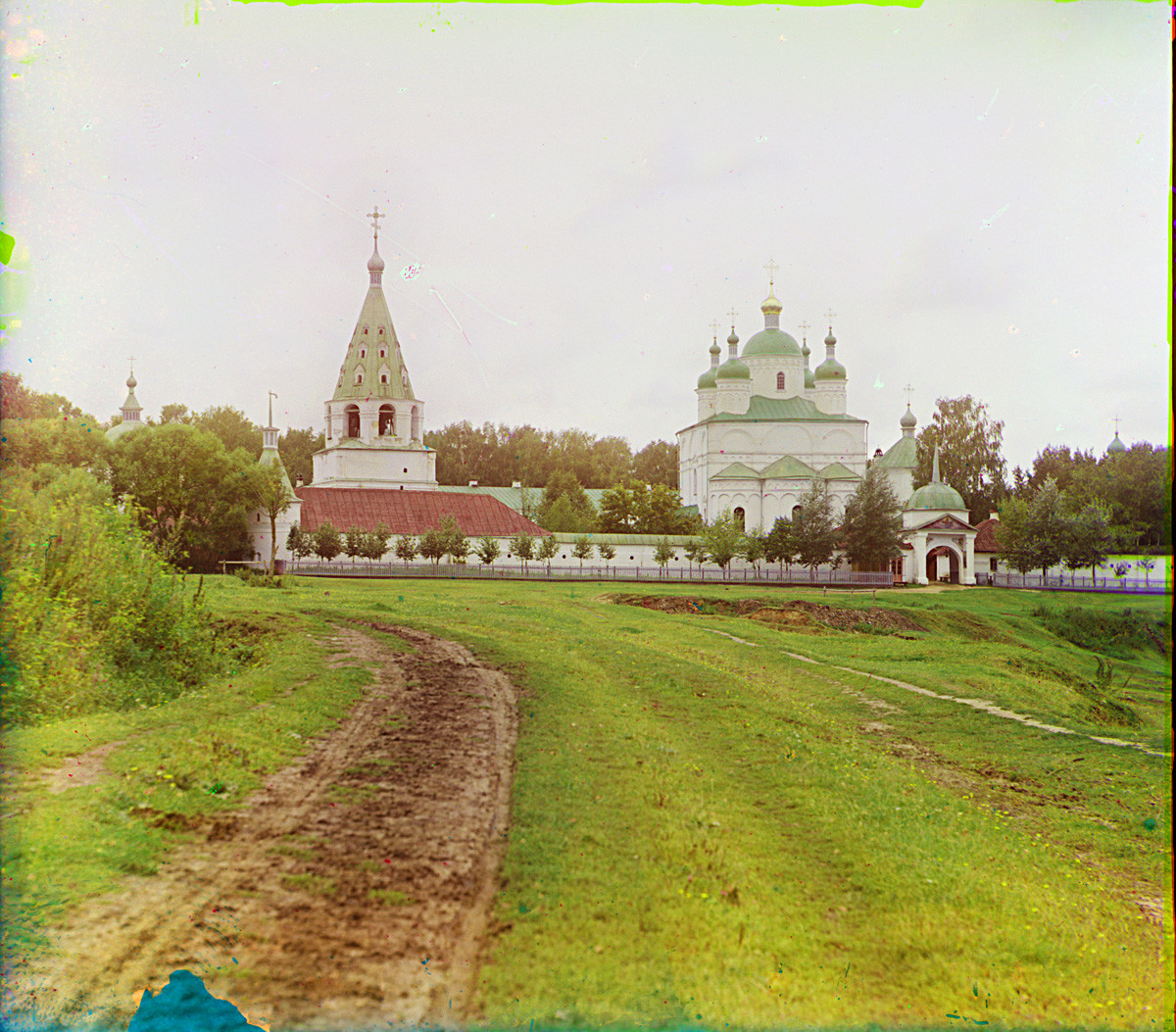
Luzhetsky-St. Ferapont-Nativity of the Virgin Monastery, east view. From left: Bell tower, Nativity Cathedral, Church of St. Ferapont (demolished), East Gate. Summer 1911.
Sergei Prokudin-GorskyOne such settlement is the small town of Mozhaisk, which Porkudin-Gorsky visited in the summer of 1911 as part of a project to photograph sites connected with the centennial of the Napoleonic invasion of Russia. My several visits to Mozhaisk occurred between 1992 and 2015.
Located some 60 miles to the west of Moscow, Mozhaisk was first mentioned in medieval chronicles under the year 1231, when it faced attacks by the northwestern commercial power of Novgorod the Great, as well as by Prince Yaroslav from the eastern power center of Vladimir. The Mongol invasion later that same decade (1237-38), however, wreaked destruction that dwarfed anything yet seen in medieval Rus.
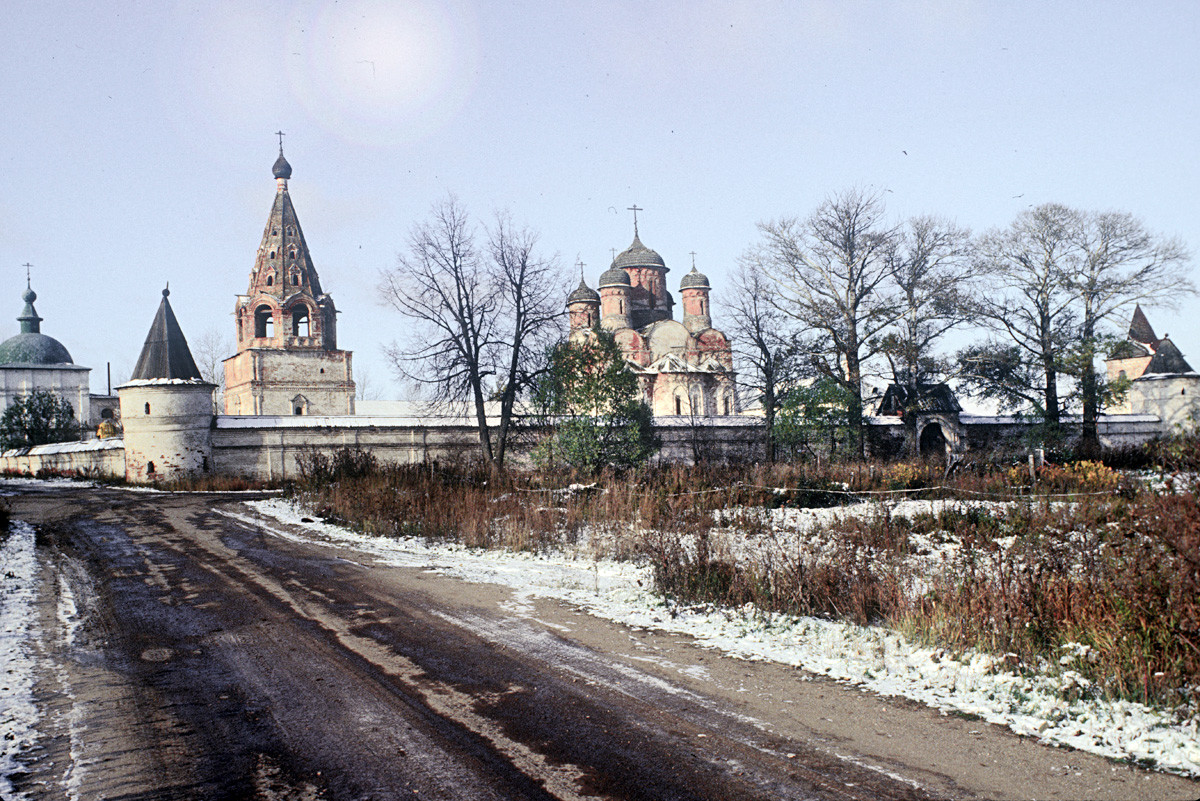
Luzhetsky Monastery, east view. From left: Church of Transfiguration over Holy Gates, southeast corner tower, bell tower, Nativity Cathedral, Church of St. Ferapont (demolished), East Gate, northeast corner tower. October 14, 1992.
William BrumfieldThroughout the 13th century, Mozhaisk was linked to the powerful Smolensk principality to the west, but in 1303, Mozhaisk was seized by Muscovite Prince Yury Danilovich, who used its fortress as a bulwark on Moscow’s western borders. This strategy proved sound in 1341 and 1368 when Mozhaisk withstood attacks by Lithuania’s Prince Olgerd as part of larger campaigns against Moscow.
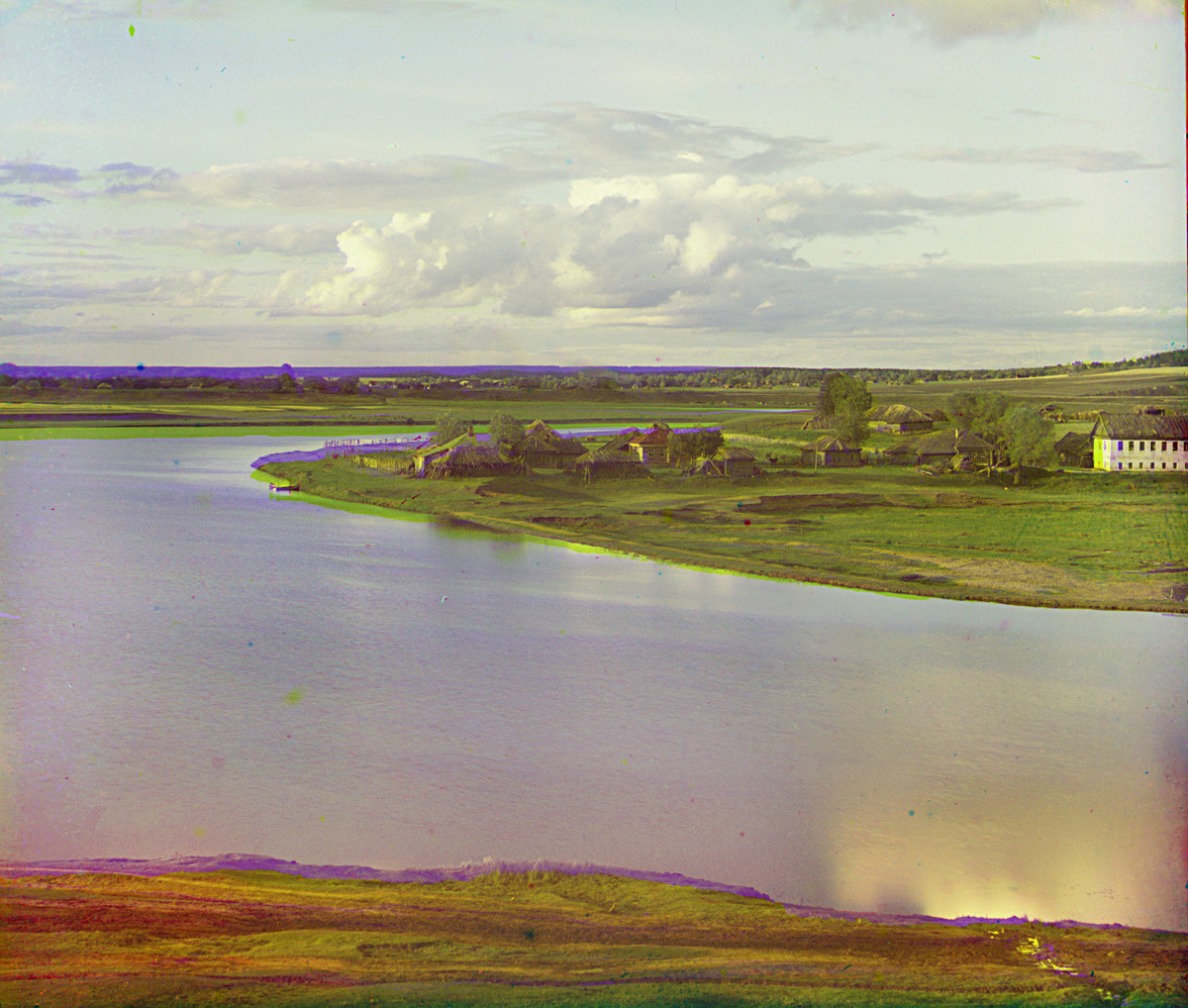
View northwest from Luzhetsky Monastery toward meadows over Moscow River. Summer 1911.
Sergei Prokudin-GorskyMozhaisk was again devastated by Khan Tokhtamysh in 1382 during an invasion to reassert the authority of the Horde over Moscow’s Grand Prince Dmitry Donskoy, who defeated the Tatar army of Khan Mamai near the Don River in 1380. This litany of devastation suggests that the fate of Mozhaisk reflected the violent history of all medieval Muscovy.
Prokudin-Gorsky devoted special attention to the Luzhetsky Nativity of the Virgin Monastery, located on the northwestern fringe of town in an area known as Luzhki (meadows) overlooking the Moscow River. Its founder, St. Ferapont of Belozersk (1330s-1426, canonized in 1549), was a monk of noble origins and a disciple of St. Sergius of Radonezh, the avatar of Muscovite monasticism.
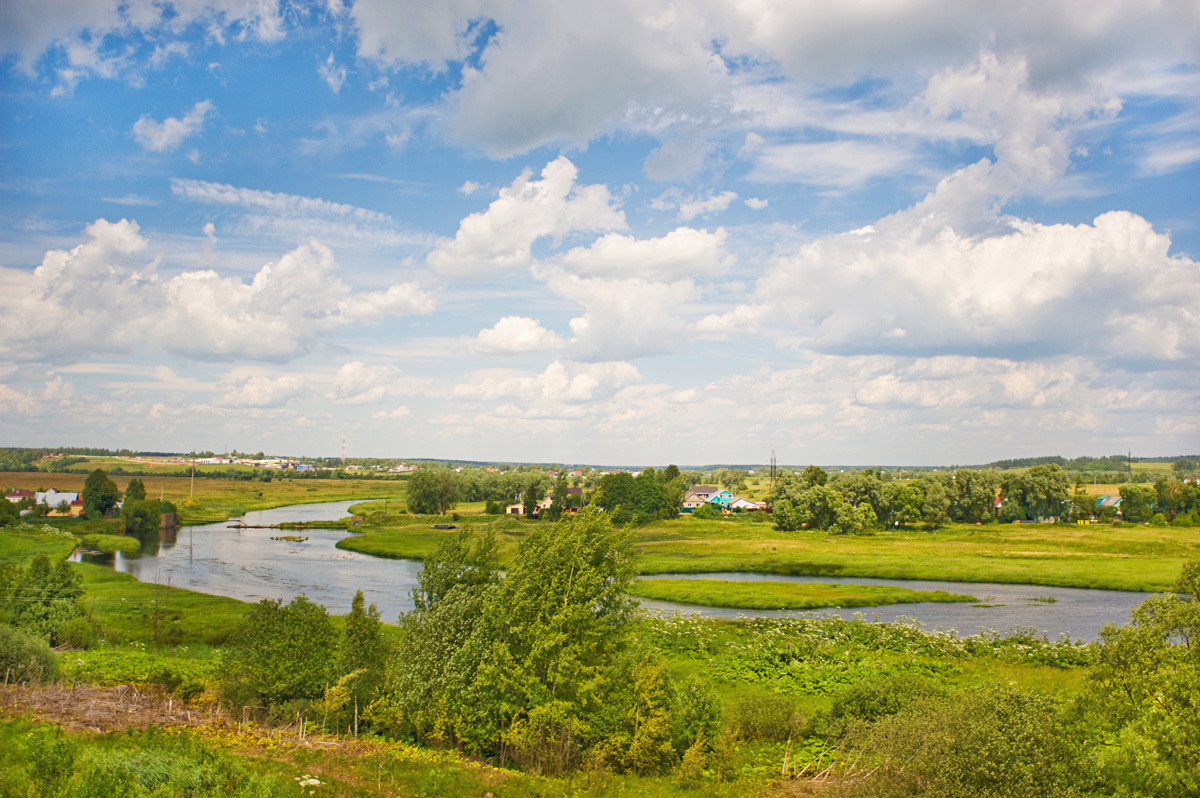
View northwest from Luzhetsky Monastery toward meadows over Moscow River. July 5, 2015.
William BrumfieldSt. Ferapont is closely associated with the Nativity of the Virgin-Ferapontov Monastery, which he founded in the northern Vologda territory in 1398. Although small in size, the monastery at Ferapontovo is known for its sublime frescoes, created in 1502 by the Moscow painter Dionisy and his sons.
It was no doubt inevitable that Ferapont would be summoned back from the north to the Moscow area. He had close connections with the Moscow court, and his renown had come to the attention of Prince Andrei of Mozhaisk, son of Moscow’s Grand Prince Dmitry Donskoy and holder of title to the northern lands around White Lake (Beloozero).
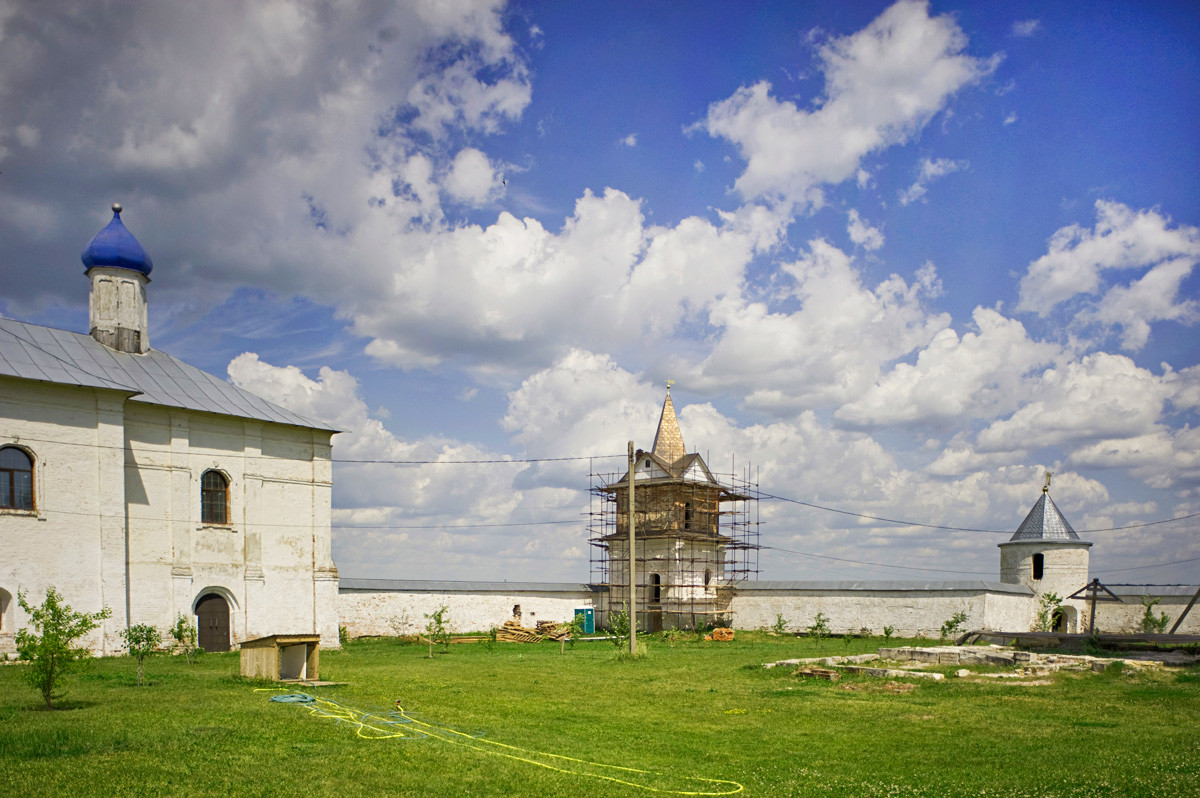
Luzhetsky Monastery. From left: Refectory Church of the Presentation, north wall, North Gate, northeast corner tower. Right foreground: foundation of original Church of St. John Climacus over grave of St. Ferapont. July 5, 2015.
William BrumfieldAt Andrei’s insistent request, Ferapont arrived at Mozhaisk in 1408 to establish another monastery dedicated to the Nativity of the Virgin, a holiday with special significance for Andrei and his father. Prince Andrei supported the monastery with the construction of a small limestone church, whose foundation is still visible. Excavations at the site in 1997 uncovered what are thought to be the remains of St. Ferapont.
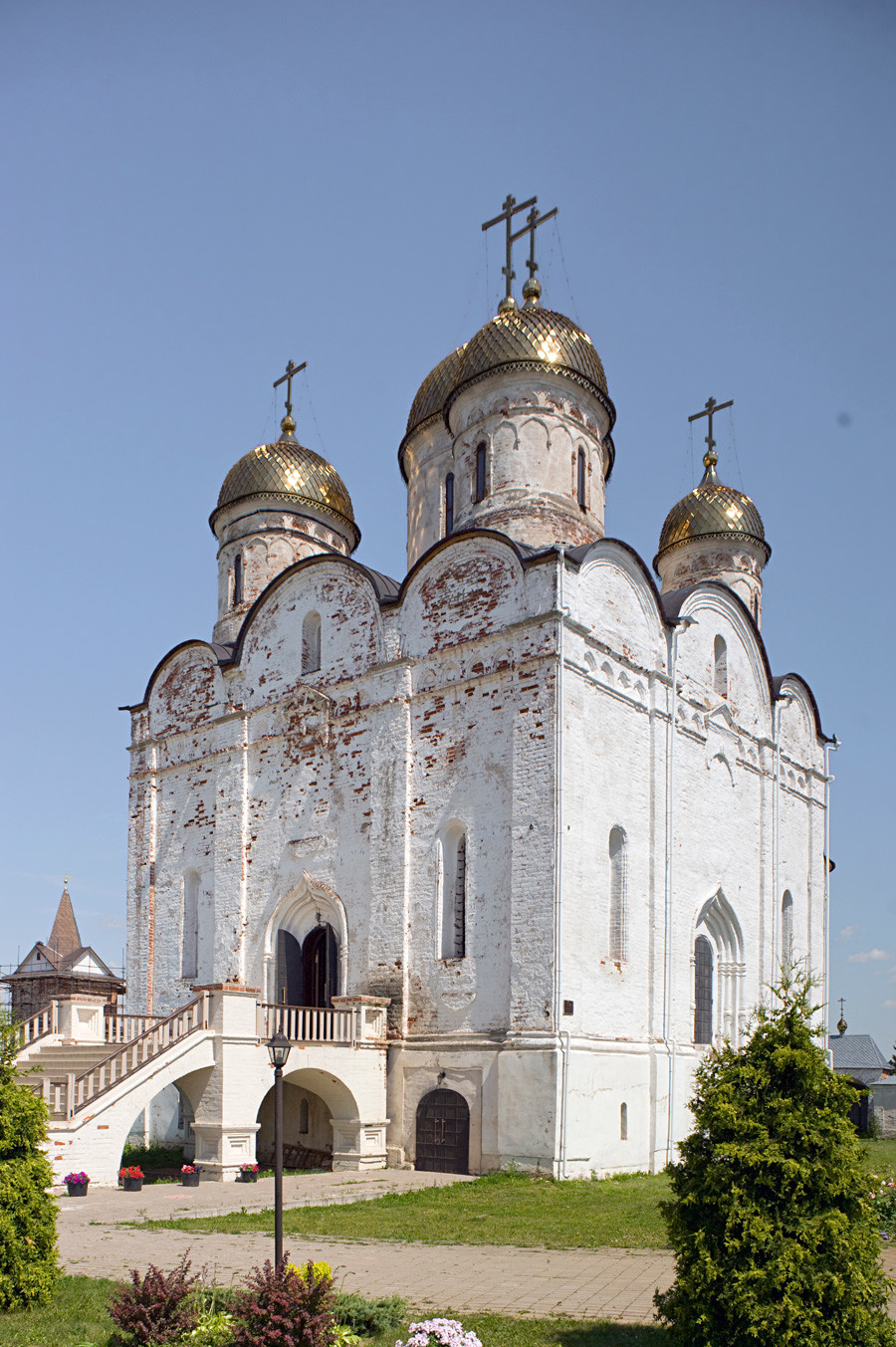
Luzhetsky Monastery. Cathedral of Nativity of the Virgin, southwest view. July 5, 2015.
William BrumfieldA major building campaign at the monastery began under the direction of Makary, who served as abbot of the monastery in 1523-26 and continued to support it after becoming the Metropolitan, or spiritual leader, of the Russian church in 1542. Makary played an important role in both church and state affairs during the early reign of Ivan the Terrible (1530-84). With his guidance, a new masonry Cathedral of the Nativity of the Virgin was begun in the 1520s and consecrated in 1547.
Also dating from the early 16th century is the Church of the Presentation of the Virgin, with an attached refectory, or dining hall. It was substantially rebuilt in the mid-18th century but preserves much of its archaic form. At the turn of the 17th century a domed brick church was erected over the main gate and dedicated to the Transfiguration of the Savior.
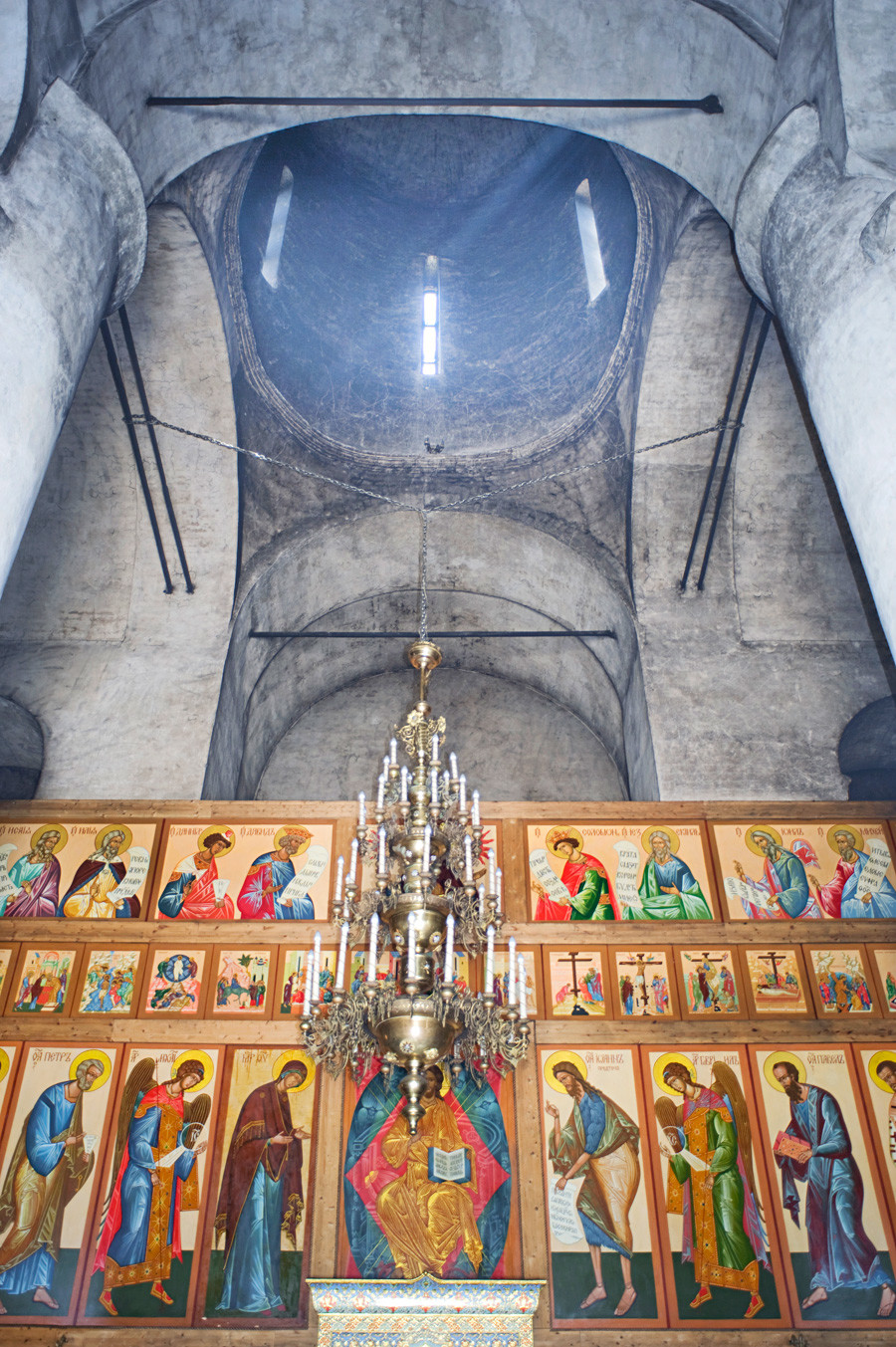
Luzhetsky Monastery. Cathedral of Nativity of the Virgin. Interior, view east toward icon screen & main dome. July 5, 2015.
William BrumfieldAlthough Mozhaisk lost its former significance during the dynastic turbulence of the early 17th century, the town gradually revived in the shadow of Moscow. In the 1680s, the cloisters were rebuilt in brick, as were the monastery walls with large corner towers. During the same period a massive bell tower was erected and served as the mausoleum of the noble Savyolev family.
The town’s strategic position on a main route to the west brought renewed danger during the Napoleonic invasion of 1812. Mozhaisk was gripped with military ardor as great armies converged on the nearby village of Borodino. Following the titanic clash of armies there on Aug. 26 (Sept. 7 by the Western calendar), Mozhaisk was filled with Russian wounded.
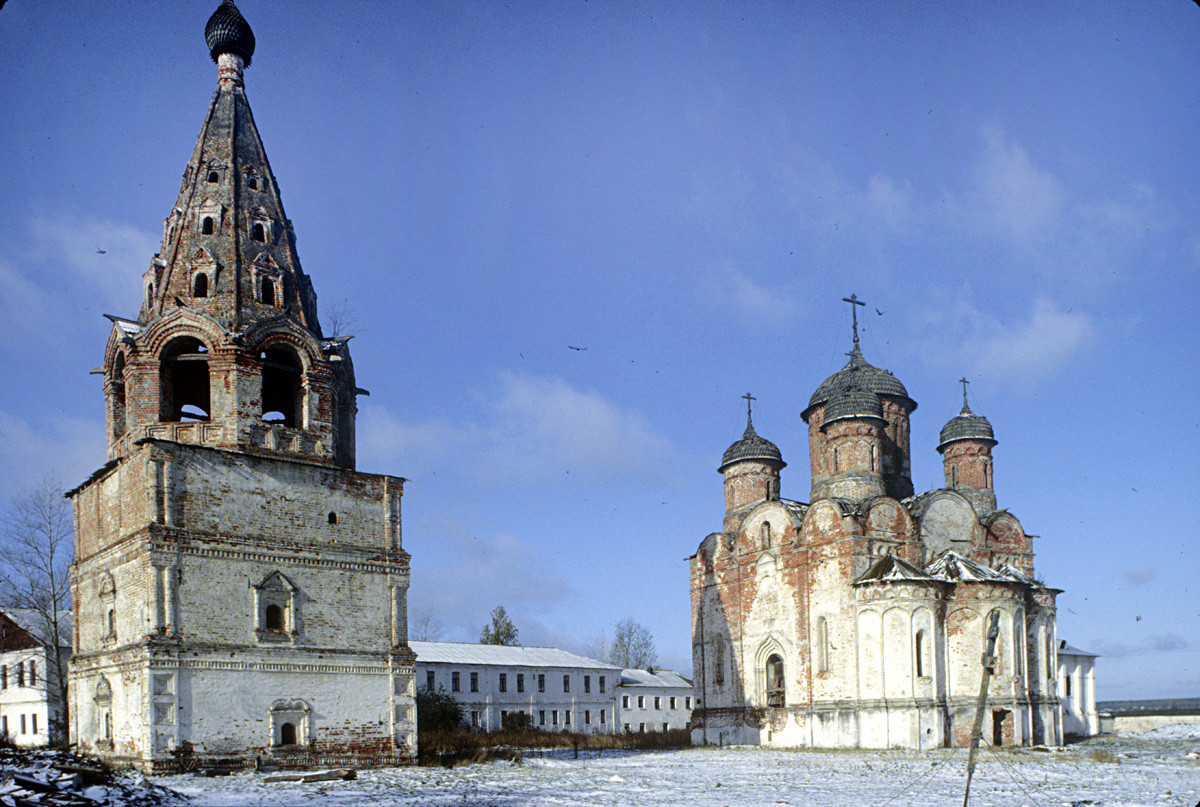
Luzhetsky Monastery. From left: Bell tower, cloisters, Nativity Cathedral, southeast view. October 14, 1992.
William BrumfieldAs the main force led by General Kutuzov retreated toward Moscow, the French occupied the Luzhetsky Monastery and Mozhaisk. When the French abandoned the area during Napoleon’s retreat in mid-October, the town and the Luzhetsky Monastery presented a scene of devastation.
The monastery was closed in 1922 after the Soviets came to power, although its cathedral served as a parish church until its closure in 1929. Thereafter, the monastery buildings were ransacked and converted to various workshops.
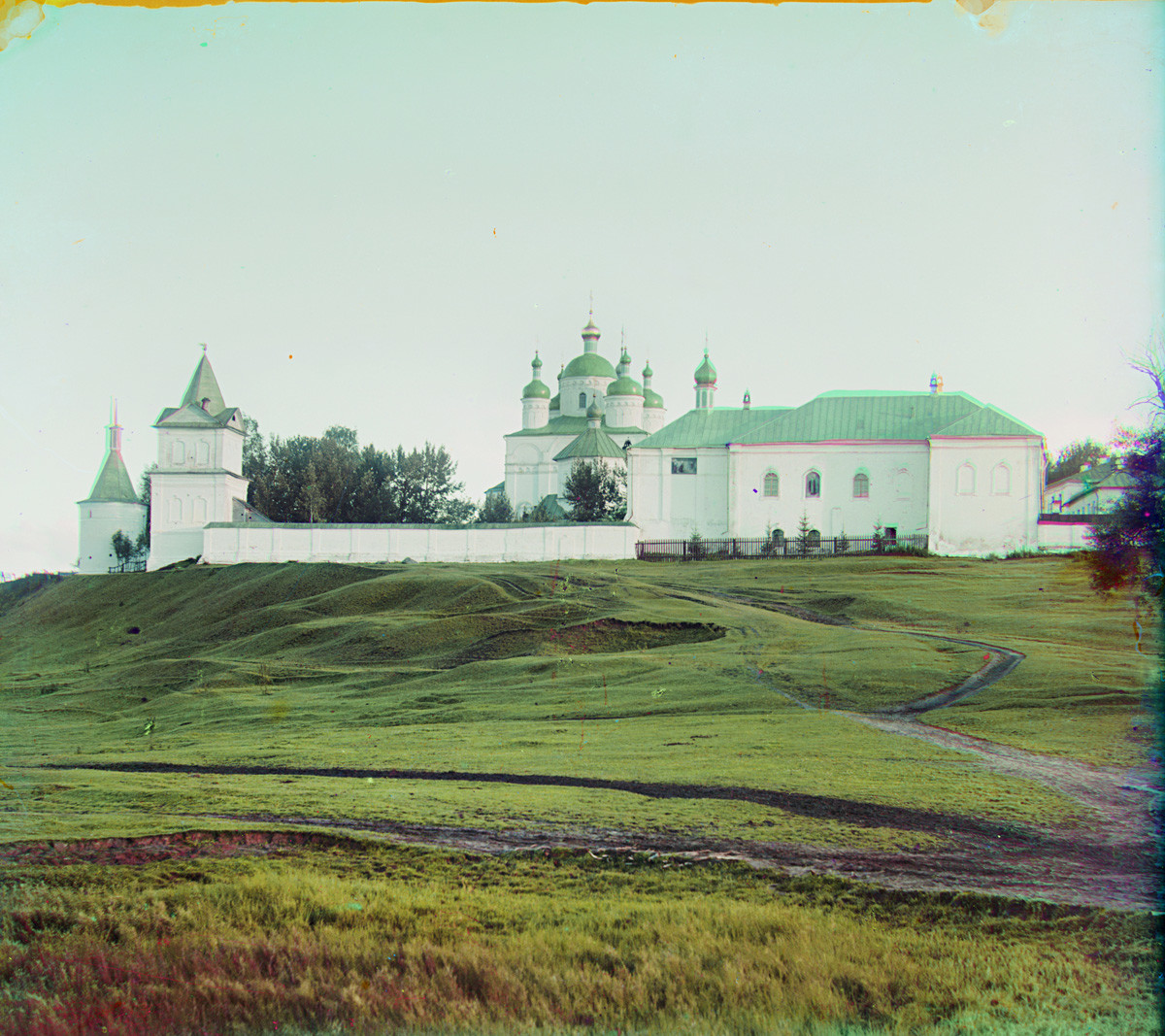
Luzhetsky Monastery. North view from bank of Moscow River. From left: North wall & gate, Nativity Cathedral, Church of the Presentation with refectory. Summer 1911.
Sergei Prokudin-GorskyNonetheless, the monastery’s historical significance was recognized, and limited restoration work began on the Nativity Cathedral in the early 1960s. My photographs from 1992 show the beauty of the monastery, although still in a desolate state.
In 1994 the Luzhetsky Monastery was finally returned to the Orthodox Church, and services resumed. Five years later the relics of St. Ferapont were returned to the monastery and laid to rest in the Nativity Cathedral.
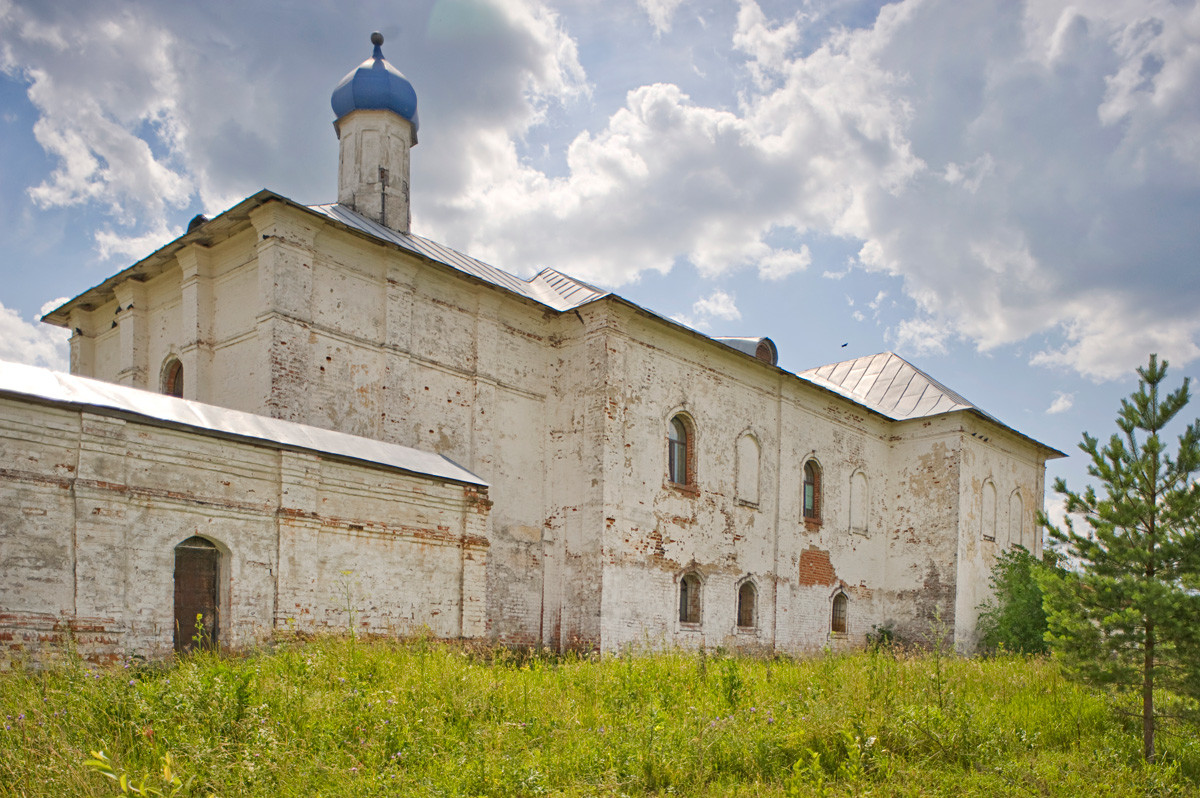
Luzhetsky Monastery. Church of the Presentation with refectory, northeast view. July 5, 2015.
William BrumfieldThe memory of St. Ferapont is still venerated in Mozhaisk. In the nearby village of Isavitsy, a log chapel was erected in his memory in 2008 on the 600th anniversary of the founding of Luzhetsky Monastery. At the center of the memorial site is a sacred spring reputed to have been discovered by Ferapont himself. Visitors freely take water from the spring.

View northeast from Luzhetsky Monastery toward Ilinskaia Sloboda over Moscow River. Summer 1911.
Sergei Prokudin-GorskyProkudin-Gorsky also photographed the monastery’s bucolic surroundings, with views of the meadows across the small Moscow River. My photographs over a century later show much the same landscape.
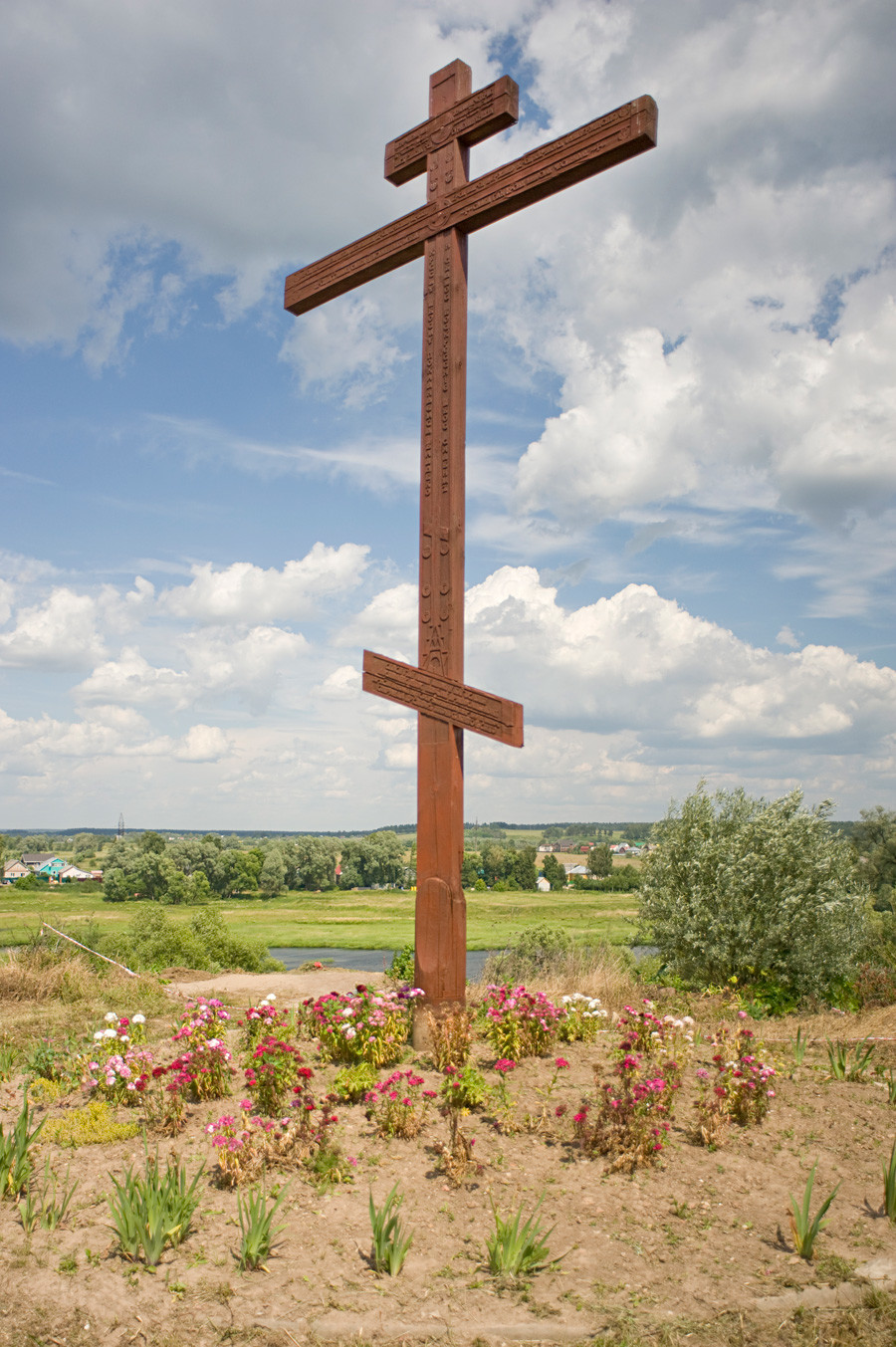
View northeast from Luzhetsky Monastery toward Ilinskaia Sloboda over Moscow River. Votive cross. July 5, 2015.
William BrumfieldIn the early 20th century the Russian photographer Sergei Prokudin-Gorsky devised a complex process for color photography. Between 1903 and 1916 he traveled through the Russian Empire and took over 2,000 photographs with the process, which involved three exposures on a glass plate. In August 1918, he left Russia and ultimately resettled in France with a large part of his collection of glass negatives. After his death in Paris in 1944, his heirs sold the collection to the Library of Congress. In the early 21st century the Library digitized the Prokudin-Gorsky Collection and made it freely available to the global public. A number of Russian websites now have versions of the collection. In 1986 the architectural historian and photographer William Brumfield organized the first exhibit of Prokudin-Gorsky photographs at the Library of Congress. Over a period of work in Russia beginning in 1970, Brumfield has photographed most of the sites visited by Prokudin-Gorsky. This series of articles juxtaposes Prokudin-Gorsky’s views of architectural monuments with photographs taken by Brumfield decades later.
If using any of Russia Beyond's content, partly or in full, always provide an active hyperlink to the original material.
Subscribe
to our newsletter!
Get the week's best stories straight to your inbox